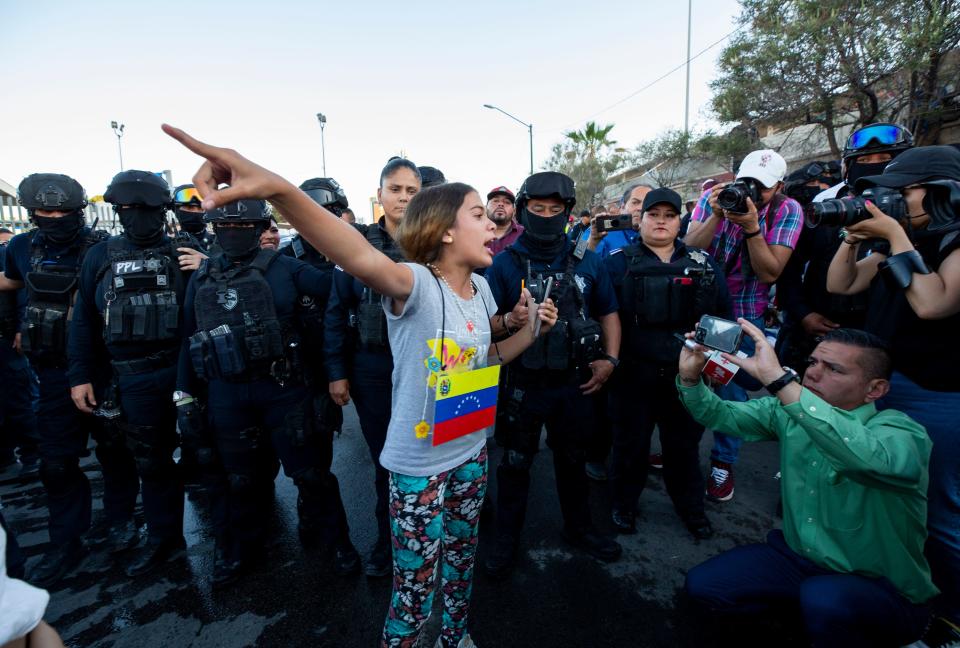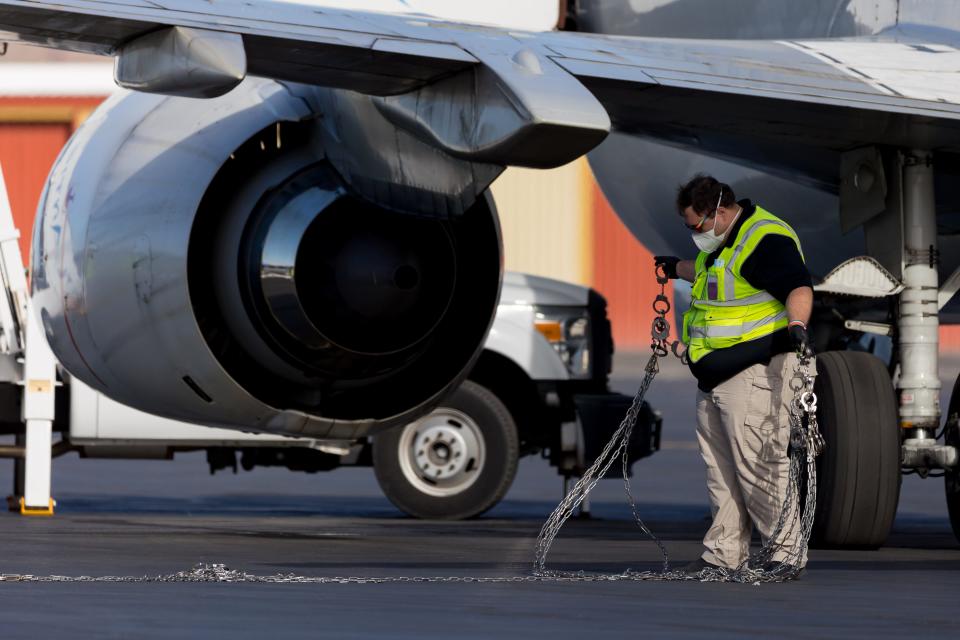Migrant unlawful entries plunge 70% as new US policies impact El Paso, Texas-Mexico border
After a monthslong humanitarian crisis at the border, migration patterns have shifted and the number of migrants arriving has declined dramatically. What's going on?
Asylum-seekers and other migrants were arriving at the U.S.-Mexico border by the tens of thousands for months. Since the end of Title 42 expulsions on May 12, the Biden administration has implemented a series of new border policies that include new lawful pathways for asylum-seekers and significant new restrictions on asylum eligibility, along with stiff consequences for migrants who cross the U.S. border illegally or who don't have a valid claim to stay.
Here's a look at how national policies and global conditions are affecting migration trends in El Paso, the Texas border and states beyond the Borderland.
One-way ticket home: Biden administration highlights migrant removal, deportation flights
El Paso sees slowdown in migrant arrivals
The Biden administration touted new statistics this week showing unlawful entries between ports of entry at the Southwest border dropped 70% since May 11.
The administration didn't provide the total number of migrants encountered during the period but said U.S. Customs and Border Protection registered a daily average of 3,700 "unscheduled encounters" since that date, borderwide.
At the height of the humanitarian crisis in May, the Border Patrol's El Paso Sector alone reached a daily average of more than 2,000 encounters per day. Daily migrant encounters in the El Paso Sector have trended below 800 since mid-May, according to the city's online dashboard.
Shelters in El Paso still are hosting asylum-seekers and other migrants.
But the streets around Sacred Heart Church, 602 S Oregon St., which were teeming with hundreds of migrants camped in homeless conditions, are now largely empty of the cardboard beds and lean-tos that occupied the blocks for weeks before the pandemic Title 42 policy restrictions ended.
What is Title 8? What to know about the nation's immigration law and border enforcement

Removals, restrictions on asylum take effect
Homeland Security agencies have been returning migrants to Mexico or their countries of origin under expedited removal or formal deportation, rather than quick expulsions. The administration said the Department of Homeland Security has repatriated 38,400 noncitizens between May 12 and June 2, many with a five-year ban on any lawful return.
The repatriations include the removal to Mexico of more than 1,400 Cubans, Haitians, Nicaraguans and Venezuelans under an agreement with Mexico.
U.S. Immigration and Customs Enforcement has been publicizing its near-daily removal flights out of El Paso.

Using a lawful pathway created this year, an average of 1,070 migrants are presenting at ports of entry each day after making an appointment via the CBP One app, the administration said. However, a new rule requires certain migrants to show they attempted to seek asylum in another country first, or they will be rejected.
The Biden administration said its plan "is working as intended," even as the conditions people are fleeing haven't changed and the risk that coyotes will exploit current policies remains.
More: US Rep. Veronica Escobar unveils bipartisan immigration plan
Florida Gov. Ron DeSantis plays border politics
Elected officials in states located far from the U.S.-Mexico border are getting into border politics, passing immigration-related legislation and offering to send their own National Guard troops to the Texas border.
Florida Gov. Ron DeSantis ‒ who recently launched a campaign for the Republican presidential nomination ‒ signed into law legislation that sharply restricts the ability of undocumented migrants to live and work in the state. Senate Bill 1718 takes effect July 1 in Florida.

The new law dramatically expands the ability of state law enforcement to enforce immigration laws, according to the American Immigration Lawyers Association. It requires hospitals to collect data on patients' immigration status and restricts counties and municipalities from issuing driver's licenses to undocumented migrants.
DeSantis and at least seven other Republican governors have promised to send hundreds of National Guard soldiers and state troopers to the Texas border following a border security briefing by Gov. Greg Abbott. In May, DeSantis said he would send 800 soldiers, 200 Florida Department of Law Enforcement officers, 101 state troopers and 20 wildlife officers.
Iowa Gov. Kim Reynolds promised Texas 100 National Guard troops in August and 30 Department of Public Safety personnel in September. The governors of Arkansas, Virginia, West Virginia and South Carolina have made similar commitments.
The Biden administration acknowledged the limits of executive action to deal with regional migration and urged Congress to act to repair the nation's immigration laws.
"Neither party can address its impact on our border by itself," the administration said in a recent statement. "Until and unless Congress comes together in a bipartisan way to address our broken immigration and asylum system, we will continue to see surges in migration at our border."
This article originally appeared on El Paso Times: El Paso migrant unlawful entries fall, immigration policies impact US

